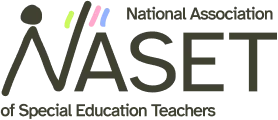- NASET Master Curriculum – FREE TO NASET MEMBERS This is an excellent tool for creating IEPs and curricula. It consists of the following components:
- 16 Subject Areas
- 105 Goal Areas under the Subject Areas
- 4,830 Objectives under the Goal Areas
- 2,719 Suggested Activities for achieving the objectives.
- Writing good IEP goals: This area contains a series of articles that answer many questions about writing IEPs, including goals and objectives.
- Making IEP Goals measurable: These examples are from the handbook “A Guide for Understanding and Developing IEPs”.
- Writing IEP Goals: A very well organized site that takes you through every step of writing an IEP including annual goals, writing measurable goals and objectives, present levels of educational performance checklists
- Basic IEP: a good site that explains the language of IEPs including measurable goals, number of goals, and numerous samples to help you understand how they are written.
- Sample IEP goals: The Goal Bank has been designed to allow users to locate specific goals as used in the eSIS SPED Full software. Click on a Content Area to proceed to specific Content Strands. From there, locate the specific strand and click to locate the Individual Goals.
- Sample IEP for child with autism: a sample IEP outlining goals and objectives for a child with PDD.
- IEP goals/benchmarks: The goals and objectives or benchmarks are the core of the IEP. This site explains these areas and their importance for parents and professionals.
- Objectives for behavior plans:If you are writing a plan to ensure that your behavior student will be successful, you will want to make sure that your goals are based on the student’s past performance and that they are stated positively.
- Everything you need to write an IEP: The Individual Education Plan (IEP) is every exceptional or identified student’s lifeline for academic success. If students with special needs are to achieve the academic curriculum to the best of their ability and as independently as possible, the professionals involved in the delivery of their programming must have a plan in place.
- Developing IEP goals: a good step by step description with some useful tools to determine appropriate goals.
- Annuals goals, short-term instructional objectives and benchmarks: a good step by step outline that explains in easy terms the basics behind writing annual goals.
-
An IEP goal bank: thousands of goals that can be used to design IEP goals and objectives in 12 different areas including functional academics, independent living, motor, recreation and leisure, daily living skills, social emotional and much more.Easy to use.
- Motor goals behaviors and objectives: this site offers numerous goals in these areas for infants through 12 years of age.
- The dreaded IEP behavioral objective: This page is to give you extra information and practice, in case you are having difficulties writing them for your lesson plans.
